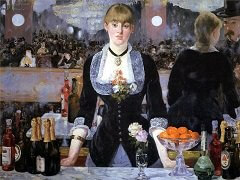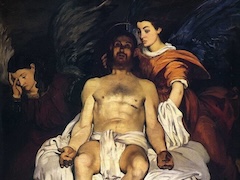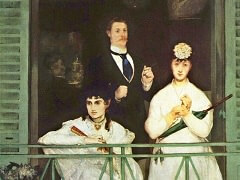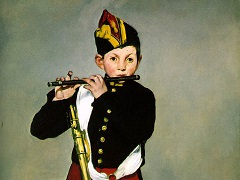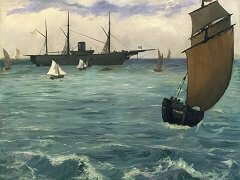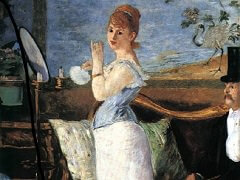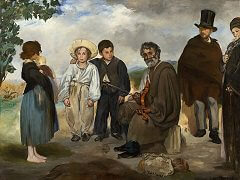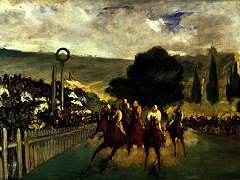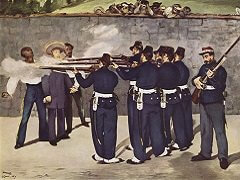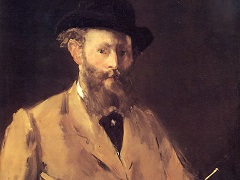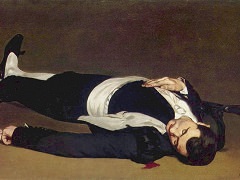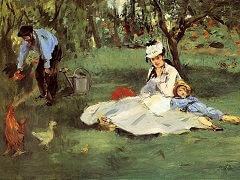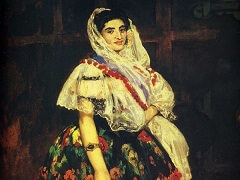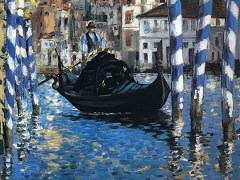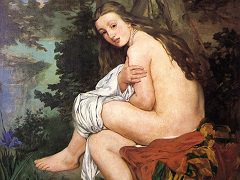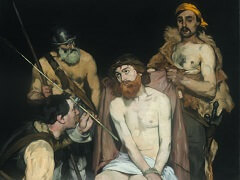The Luncheon on the Grass, 1862 by Édouard Manet
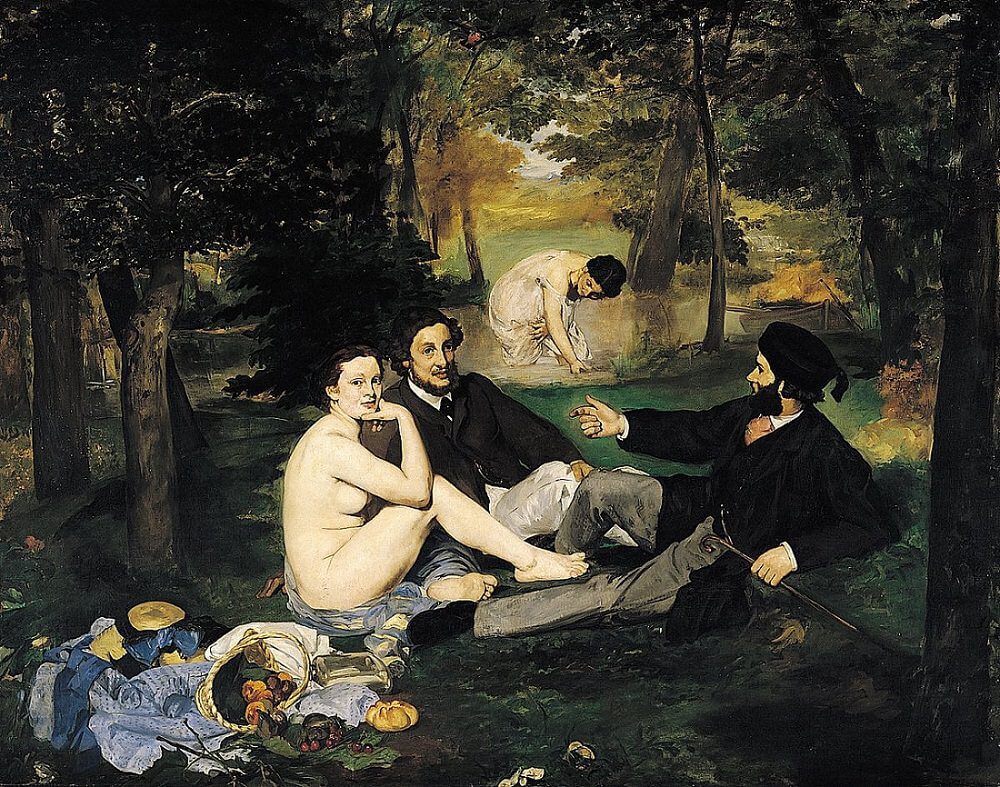
Luncheon on the Grass ("Dejeuner sur l'Herbe," 1863) was one of a number of impressionist works that broke away from the classical view that art should obey established conventions and seek to achieve timelessness. The painting was rejected by the salon that displayed painting approved by the official French academy. The rejection was occasioned not so much by the female nudes in Manet's painting, a classical subject, as by their presence in a modern setting, accompanied by clothed, bourgeois men. The incongruity suggested that the women were not goddesses but models, or possibly prostitutes.
Yet in Le dejeuner sur l'herbe, Manet was paying tribute to Europe's artistic heritage, borrowing his subject from The Pastoral Concert - a painting by Titian attributed at the time to Giorgione (Louvre) - and taking his inspiration for the composition of the central group from the Marcantonio Raimondi engraving after Raphael's Judgement of Paris.But the classical references were counterbalanced by Manet's boldness. The presence of a nude woman among clothed men is justified neither by mythological nor allegorical precedents. This, and the contemporary dress, rendered the strange and almost unreal scene obscene in the eyes of the public of the day. Manet himself jokingly nicknamed his painting "la partie carree".
Manet displayed the painting instead at the Salon des Refuses, an alternative salon established by those who had been refused entry to the official one. Like his friend Courbet, Manet influenced modern painting not only by his use of realistic subject matter but also by his challenge to the three-dimensional perspectivalism established in Renaissance painting. Manet painted figures with a flatness derived partly from Japanese art and resembling (as Gustave Courbet commented) the flatness of the king or queen on a playing card.
Luncheon on the Grass - testimony to Manet's refusal to conform to convention and his initiation of a new freedom from traditional subjects and modes of representation - can perhaps be considered as the departure point for Modern Art. The modernist reinvention of pictorial space had begun.

